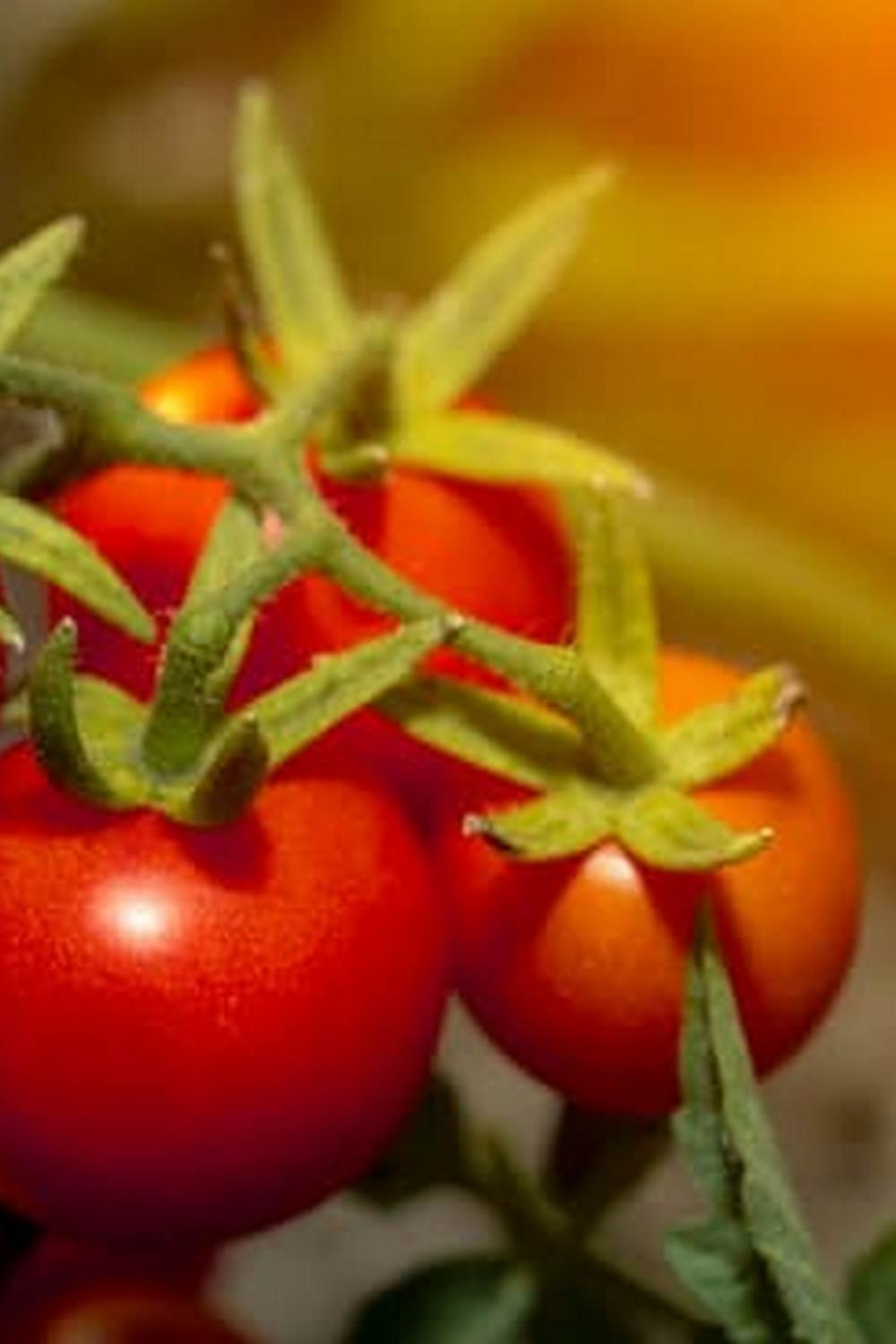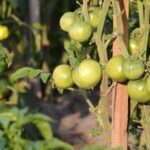When it comes to successful vegetable container gardening, the importance of soil cannot be understated. The key to thriving vegetables lies in the quality and composition of the soil used in the containers. The best soil for vegetable container gardening plays a crucial role in providing essential nutrients, proper drainage, and optimal conditions for plant growth.
Choosing the right soil for your vegetable container garden involves understanding the unique requirements of different plant varieties and how they interact with their environment. Factors such as water retention, aeration, nutrient content, and pH levels all contribute to the overall health and productivity of your plants. By selecting the best soil mix, you can create a conducive environment for your vegetables to flourish.
In this article, we will delve into the significance of soil in vegetable container gardening, exploring various aspects such as soil composition, drainage practices, comparison of different soil types, DIY mix recipes, testing pH levels and nutrient content, as well as maintenance tips for ensuring healthy soil. Understanding these principles will set you on the path to cultivating a successful and bountiful vegetable container garden.
Choosing the Right Container
When it comes to vegetable container gardening, choosing the right container is crucial for the overall health and success of your plants. The type of container you select can directly impact the soil quality, drainage, and overall growth of your vegetables. Factors to consider when choosing a container include size, material, and design.
Size Matters
One of the essential factors to consider when selecting a container for vegetable gardening is size. The size of the container will determine how much soil your plants have available for root growth. Larger containers allow for more soil volume, which can provide better insulation against temperature fluctuations and more space for root development. Smaller containers may dry out faster and restrict root growth, leading to stunted or unhealthy plants.
Material Selection
The material of the container also plays a significant role in maintaining soil health. Different materials have varying levels of insulation, moisture retention, and durability. Generally, containers made from plastic or resin are lightweight, affordable, and retain moisture well.
However, they may not provide as much insulation as ceramic or metal containers. Ceramic pots are aesthetically pleasing but can be heavy and prone to cracking in extreme temperatures. Consider the climate in which you live when selecting the material of your container to ensure optimal soil conditions for your vegetable plants.
Design Considerations
In addition to size and material, the design of the container can impact soil health in vegetable gardening. Containers with proper drainage holes at the bottom prevent waterlogging and promote good airflow to the roots. Additionally, raised beds or self-watering containers can help regulate moisture levels and make watering more manageable for busy gardeners. Choose a container design that suits your gardening style and provides a healthy environment for your vegetables to thrive.
Understanding Soil Composition
When it comes to vegetable container gardening, the soil composition plays a crucial role in the health and growth of your plants. Understanding how to create the best soil mix can make a significant difference in the success of your garden. The right combination of potting mix, compost, and amendments can provide essential nutrients for your vegetables to thrive.
To ensure that you have the best soil for vegetable container gardening, consider the following factors when choosing your soil components:
- Potting Mix: A good potting mix is lightweight, well-draining, and retains moisture. Look for mixes specifically formulated for container gardening, as they are designed to provide proper aeration and drainage for plant roots.
- Compost: Adding compost to your soil mix enriches it with organic matter and essential nutrients. Compost helps improve soil structure, water retention, and microbial activity, promoting healthy root development in your vegetable plants.
- Amendments: Depending on the specific needs of your plants, you may need to incorporate amendments such as perlite or vermiculite for better drainage, lime or sulfur to adjust pH levels, or organic matter like aged manure or peat moss for added nutrients.
By carefully selecting and combining these soil components, you can create a nutrient-rich environment that supports healthy plant growth in your vegetable containers. Experimenting with different ratios and combinations based on the requirements of your specific crops can help you find the best soil mix for optimal results.
Remember that regular monitoring and maintenance of your soil composition is essential for sustained success in vegetable container gardening. Keep an eye on the moisture levels, pH balance, and nutrient content of your soil through periodic testing and adjustments. With proper care and attention to detail in managing your soil composition, you can create an ideal environment for your vegetables to flourish and yield bountiful harvests.
Best Practices for Soil Drainage in Vegetable Container Gardening
Importance of Proper Drainage
Effective soil drainage is crucial for the success of vegetable container gardening as it helps prevent waterlogged roots, which can lead to root rot and other plant diseases. When excess water cannot drain freely from the soil, it can cause a lack of oxygen in the root zone, ultimately stunting plant growth. By ensuring that your container has adequate drainage, you can create a healthy environment for your vegetables to thrive.
Choosing the Right Container for Drainage
When selecting containers for vegetable gardening, opt for pots or containers with drainage holes at the bottom. These holes allow excess water to escape easily, minimizing the risk of water buildup in the soil. Additionally, consider using containers made from porous materials such as terracotta or breathable fabric pots, which promote better air circulation and drainage compared to non-porous materials like plastic.
Improving Drainage With Soil Amendments
To enhance soil drainage in vegetable containers, you can incorporate amendments such as perlite or coarse sand into your potting mix. These materials help increase airflow and create channels for excess water to move through the soil more efficiently.
Mixing compost into your soil can also improve drainage by adding organic matter that helps retain moisture while still allowing excess water to drain away. Experiment with different combinations of potting mix, compost, and amendments to find the best soil for vegetable container gardening that suits your plants’ needs.
Comparing Different Types of Soil for Vegetable Container Gardening
When it comes to vegetable container gardening, choosing the right type of soil is essential for the successful growth of your plants. The best soil for vegetable container gardening should be well-draining, nutrient-rich, and have good aeration to support healthy root development. One of the most popular options for container gardening is potting mix, which is specially formulated to provide plants with the necessary nutrients and drainage they need.
Potting mix is a lightweight soil that is designed specifically for use in containers. It usually consists of a combination of materials such as peat moss, vermiculite, perlite, and compost. This blend allows for proper water retention while also providing adequate drainage to prevent waterlogging, which can lead to root rot. Potting mix is widely available at garden centers and nurseries and is a convenient option for beginner gardeners looking for an easy-to-use soil solution.
Another alternative to potting mix for vegetable container gardening is compost-based soil. Compost is rich in organic matter and nutrients that are beneficial for plant growth.
When used in combination with other materials like sand or perlite to improve drainage, compost-based soil can be an excellent choice for growing vegetables in containers. However, it’s important to note that pure compost can be too dense and may not provide adequate aeration for plant roots, so blending it with lighter materials is key to creating a balanced growing medium.
| Potting Mix | Compost-Based Soil |
|---|---|
| Lightweight soil | Rich in organic matter |
| Good drainage | Beneficial nutrients |
DIY Soil Mix Recipes for Thriving Vegetable Plants in Containers
When it comes to vegetable container gardening, the quality of the soil is crucial for the successful growth of your plants. Creating a DIY soil mix can be a cost-effective and customized solution to ensure that your vegetables thrive in containers. One popular recipe for a nutrient-rich soil mix includes combining equal parts potting mix, compost, and perlite or vermiculite for improved drainage.
Potting mix provides the necessary structure for your plants’ roots to grow and develop properly. Compost adds essential nutrients to the soil, promoting healthy growth and strong yields. Perlite or vermiculite helps to aerate the soil and prevent compaction, allowing for better water retention and root development. By using this DIY soil mix recipe, you can create an optimal growing environment for your vegetables in containers.
Another DIY soil mix option is to combine equal parts peat moss, compost, and coarse sand or perlite. Peat moss retains moisture well while still allowing for good drainage, making it ideal for container gardening. Coarse sand or perlite helps to improve aeration in the soil and prevent waterlogging, which can lead to root rot. This DIY soil mix recipe provides a balanced combination of moisture retention and drainage for healthy vegetable plants in containers.
Testing Soil pH Levels and Nutrient Content
One of the key factors in ensuring the success of your vegetable container garden is testing the soil pH levels and nutrient content regularly. The pH level of the soil determines how well plants can absorb nutrients, with most vegetables thriving in a slightly acidic to neutral pH range. By testing the soil regularly, you can make adjustments to maintain optimal conditions for your plants to grow and produce bountiful harvests.
There are several methods available for testing soil pH levels and nutrient content. You can purchase DIY test kits from your local gardening store, or you can send samples to a professional lab for more accurate results. Additionally, certain plants may indicate nutrient deficiencies or imbalances through their leaf color or growth patterns, providing visual cues that can help you identify issues before they become detrimental to your garden.
Once you have tested the soil pH levels and nutrient content, you can take steps to correct any imbalances that may be present. Adding amendments such as lime to raise pH levels or sulfur to lower them can help create an optimal growing environment for your vegetables.
Additionally, by fertilizing with organic matter like compost or well-balanced commercial fertilizers, you can provide essential nutrients for healthy plant growth and development. Remember that regular monitoring and adjustments are key to maintaining the best soil for vegetable container gardening.
- Regularly test soil pH levels and nutrient content using DIY kits or professional lab services.
- Monitor plant health for signs of nutrient deficiencies or imbalances.
- Adjust soil pH levels with suitable amendments like lime or sulfur.
- Fertilize with organic matter like compost to provide essential nutrients for healthy plant growth.
Maintenance Tips for Soil Health in Vegetable Container Gardening
Maintaining the health of the soil in your vegetable container garden is crucial for the success of your plants. Proper watering, mulching, and fertilizing are key components to ensure that your vegetables thrive.
When it comes to watering, it’s important to strike a balance – too much water can lead to root rot, while too little can cause your plants to wilt and stunt their growth. The best way to determine when to water is by checking the moisture levels of the soil with your finger; if it feels dry an inch below the surface, then it’s time to water.
Mulching is another essential practice in maintaining soil health in vegetable container gardening. Mulch helps retain moisture in the soil, suppresses weed growth, and regulates soil temperature. Organic materials such as straw, grass clippings, or shredded leaves make excellent mulch choices for containers. Make sure to replenish mulch regularly to continue reaping its benefits throughout the growing season.
In addition to proper watering and mulching, fertilizing plays a vital role in providing essential nutrients for your vegetable plants. Choose a fertilizer specifically formulated for vegetables and apply it according to package instructions.
Over-fertilizing can lead to nutrient imbalances and affect plant growth negatively, so it’s important not to go overboard. Regularly monitoring your plants for signs of nutrient deficiencies will also help you adjust your fertilization schedule accordingly for optimal growth and production of vegetables in containers.
Conclusion
In conclusion, choosing the best soil for vegetable container gardening is essential for the success of your plants. By understanding the importance of soil composition, proper drainage, and maintaining healthy pH levels and nutrient content, you can ensure that your vegetables thrive in containers. Whether you opt for commercial potting mix, create your own DIY soil mix, or incorporate compost and amendments, the key is to provide a nutrient-rich environment for your plants to grow.
When selecting containers for your vegetable garden, consider factors such as size, material, and drainage holes to promote optimal soil health. Additionally, regular maintenance practices like watering consistently, mulching to retain moisture, and fertilizing as needed will help keep your soil fertile and supportive of healthy plant growth. By following these best practices for soil health in vegetable container gardening, you can enjoy a bountiful harvest of fresh vegetables right at home.
To summarize, paying attention to soil quality is crucial when it comes to successful vegetable container gardening. Experiment with different types of soil mixes and amendments to find what works best for your specific needs. With proper care and maintenance, including testing and adjusting pH levels as needed, you can create an ideal growing environment for your favorite vegetables in containers. Happy gardening.
Frequently Asked Questions
What Is the Best Potting Mix for Container Vegetables?
The best potting mix for container vegetables should have a balance of moisture retention and drainage to help plants thrive. A mix with a combination of peat moss, perlite, vermiculite, and compost is ideal.
What Is a Good Soil Mix for Vegetable Garden?
A good soil mix for vegetable garden should be rich in organic matter to provide essential nutrients for plant growth. A blend of compost, topsoil, and sand can create a well-draining soil that promotes healthy root development.
What Is the Best Potting Soil for Container Plants?
The best potting soil for container plants should be lightweight, well-aerated, and have good water retention capacity. A mix containing peat moss, coconut coir, perlite, and a slow-release fertilizer can support optimal growth for container plants.

If you’re looking to get into vegetable gardening, or are just looking for some tips on how to make your current garden better, then you’ve come to the right place! My name is Ethel and I have been gardening for years. In this blog, I’m going to share with you some of my best tips on how to create a successful vegetable garden.





